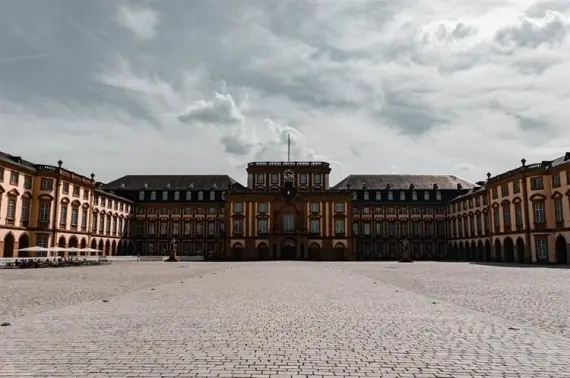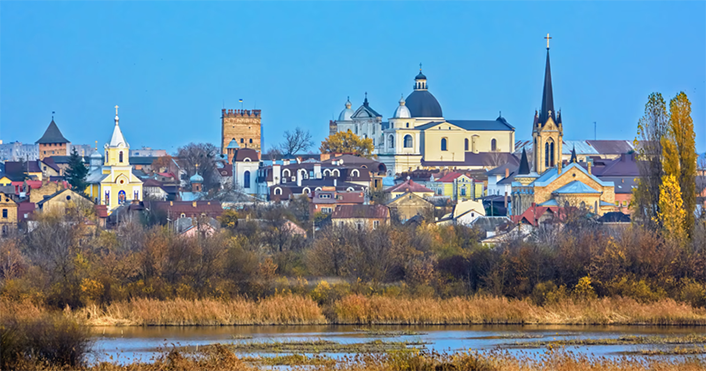How to travel from MANNHEIM to LUCK?
MANNHEIM

Mannheim is located in the southwestern part of Germany, in the state of Baden-Württemberg. With a population of more than 311,000, it is the second city in the region after Stuttgart. Mannheim is famous for its universities and research units, as well as its automotive industry - the Mercedes-Benz plant is located there, and the John Deere concern is headquartered there. In addition, it has the second largest inland port in Germany.
Mannheim - sights and attractions of the square city
It is best to start visiting Mannheim from the old town, designed according to the 18th-century baroque urban layout resembling a checkerboard. Hence it is common to refer to Mannheim as the "square city." An important attraction there is the Mannheim Palace - the largest Baroque building of its kind and the second largest in Europe, just after the Palace of Versailles. Its richly decorated, impressive interiors are worth seeing.
Another of the city's symbols is a sandstone water tower from 1889 surrounded by a small park. Also worth a visit is the Baroque Jesuit church dating from the first half of the 18th century. The temple, dedicated to Saints Ignatius Loyola and Francis Xavier, has several beautiful side altars, interesting frescoes and a Baroque organ inside.
Mannheim - transportation and getting around
Mannheim is the second largest city in Baden-Württemberg, lying about 70 kilometers from Frankfurt. The city is well connected. The central Mannheim bus station is located in the very center, right next to the city's main train station. If you are interested in buses to Mannheim, find the right connection for you on our website. When planning to visit Mannheim, the bus will be a convenient and cost-effective choice.
Mannheim is located in the southwestern part of Germany, in the state of Baden-Württemberg. With a population of more than 311,000, it is the second city in the region after Stuttgart. Mannheim is famous for its universities and research units, as well as its automotive industry - the Mercedes-Benz plant is located there, and the John Deere concern is headquartered there. In addition, it has the second largest inland port in Germany.
Mannheim - sights and attractions of the square city
It is best to start visiting Mannheim from the old town, designed according to the 18th-century baroque urban layout resembling a checkerboard. Hence it is common to refer to Mannheim as the "square city." An important attraction there is the Mannheim Palace - the largest Baroque building of its kind and the second largest in Europe, just after the Palace of Versailles. Its richly decorated, impressive interiors are worth seeing.
Another of the city's symbols is a sandstone water tower from 1889 surrounded by a small park. Also worth a visit is the Baroque Jesuit church dating from the first half of the 18th century. The temple, dedicated to Saints Ignatius Loyola and Francis Xavier, has several beautiful side altars, interesting frescoes and a Baroque organ inside.
Mannheim - transportation and getting around
Mannheim is the second largest city in Baden-Württemberg, lying about 70 kilometers from Frankfurt. The city is well connected. The central Mannheim bus station is located in the very center, right next to the city's main train station. If you are interested in buses to Mannheim, find the right connection for you on our website. When planning to visit Mannheim, the bus will be a convenient and cost-effective choice.
LUCK

Lutsk, the historic capital of Volyn, is a city in Ukraine offering many tourist attractions, including parks and museums.
One of the main sights is Lubart Castle, a medieval fortress dating back to the 14th century and a symbol of the city.
Among the museums worth a visit is the Volyn Icon Museum, displaying more than 600 icons from the 16th-19th centuries, including the miraculous Chelm Icon of the Mother of God from the 11th-12th centuries.
The Volyn Landmark Museum, the largest and oldest in the region, has more than 160,000 exhibits related to the nature, history, ethnography and art of Volyn.
Of interest to science lovers is the Museum of Science and Technology, offering interactive exhibits on robotics, drones and other technologies.
Among green spaces, the Park of Culture and Recreation named after Lutsk's 900th anniversary stands out, the largest green area in the city, ideal for walking and recreation.
City Park is a modern recreational complex on the Sapalaivka River, offering attractions for children and adults, including the Bridge of Love and the first statue of Scriabin.
Lutsk is a city that combines a rich history with modern attractions that are sure to interest any tourist.
Lutsk, the historic capital of Volyn, is a city in Ukraine offering many tourist attractions, including parks and museums.
One of the main sights is Lubart Castle, a medieval fortress dating back to the 14th century and a symbol of the city.
Among the museums worth a visit is the Volyn Icon Museum, displaying more than 600 icons from the 16th-19th centuries, including the miraculous Chelm Icon of the Mother of God from the 11th-12th centuries.
The Volyn Landmark Museum, the largest and oldest in the region, has more than 160,000 exhibits related to the nature, history, ethnography and art of Volyn.
Of interest to science lovers is the Museum of Science and Technology, offering interactive exhibits on robotics, drones and other technologies.
Among green spaces, the Park of Culture and Recreation named after Lutsk's 900th anniversary stands out, the largest green area in the city, ideal for walking and recreation.
City Park is a modern recreational complex on the Sapalaivka River, offering attractions for children and adults, including the Bridge of Love and the first statue of Scriabin.
Lutsk is a city that combines a rich history with modern attractions that are sure to interest any tourist.
© 2025 Sindbad
UX/UI Design by Verseo
